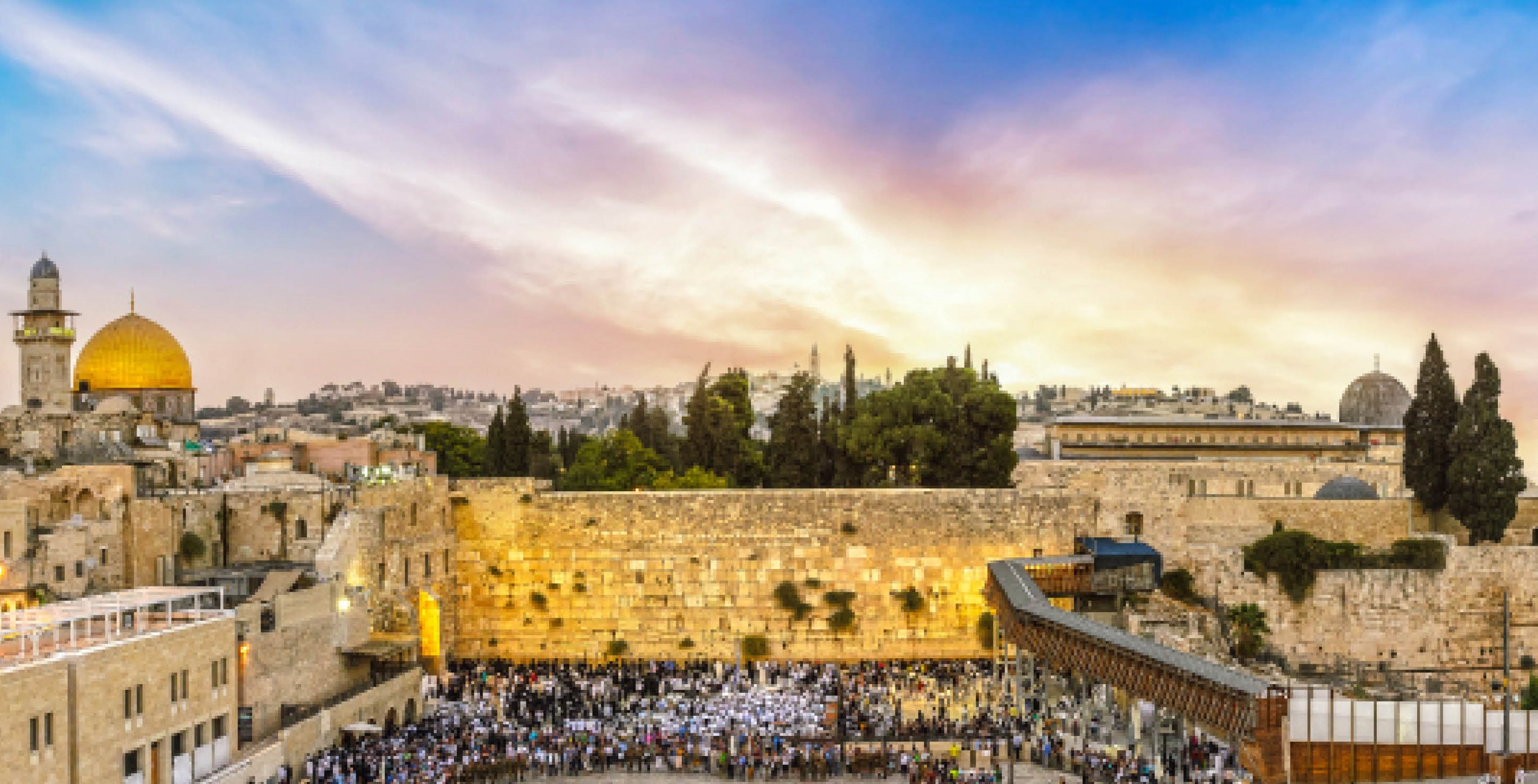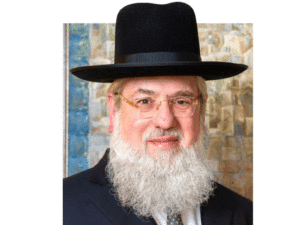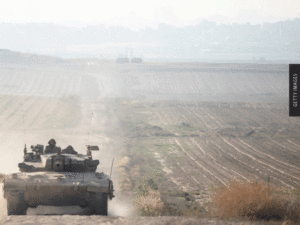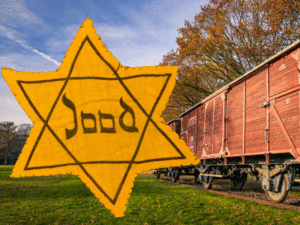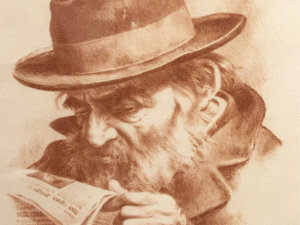What are they all about?
I remember listening to Rav Shlomo Brevda describe for hours the glory of the Bais Hamikdosh. I had actually just spoken on the same Three Week panel, but I sat transfixed as he vividly depicted the avodah and miracles that occurred in the Bais Hamikdosh. He had warned me in advance that he needs several hours to paint this picture, because generally we no longer remember what we are supposed to be mourning for. Yet, now, in his absence and in our perennial busyness, we tend to arrive at Shivah Asar B’Tammuz bereft of any real emotional attachment to the Bais Hamikdosh. Are we therefore just mouthing words about its destruction? More importantly, how should we motivate ourselves and prepare properly for these crucial 21 days?
Rav Moshe Feinstein zt”l (Kol Rom, 5781 edition, page 321) offers a fascinating solution. He points out that during the second Bais Hamikdosh, we spent most of our time under the heel of various foreign empires – the Persians, Greeks and Romans – yet as long as the Bais Hamikdosh stood, we were not considered to be in golus. Rav Moshe goes even further. Even after the city of Yerushalayim was breached on the seventeenth of Tammuz, the churban had not yet begun. It was only on the ninth of Av, when the destruction of the Bais Hamikdosh began, that we refer to the churban itself. Why? Rav Moshe’s answer is that we must learn from this chronology that “the essence of our lives is kedusha – holiness – which is defined by elevating the soul above the body. That is the purpose of our nation and indeed of the entire world.”
So there we have it. Our mandate for the Three Weeks is to recognize and therefore mourn the loss of kedusha in our lives. The gadol hador is teaching us that as important as the Bais Hamikdosh is to us, the essence of its centrality is that it provided a constant source of sanctity in our lives. Chazal tell us that a person who sinned almost always obtained nearly instant forgiveness when the Bais Hamikdosh stood. He went immediately to Yerushalayim, offered the appropriate korban and received kapparah. During the first Bais Hamikdosh, if someone had religious doubts, he could go to Yerushalayim and see ten miracles. Even all parnassah came from having the Bais Hamikdosh. The Gemara (Brachos 3b) tells us that when the leaders of Klal Yisroel complained to Dovid Hamelech about the poverty of his people, they used the terminology that “the kometz cannot satisfy the lion.” The Maharsha explains the meaning of this cryptic phrase: “they declared that the future prosperity of Klal Yisroel will flow from the kometz – the part of the korban mincha which is sacrificed on the mizbeiach. Since you have not yet built the Bais Hamikdosh, you must provide for them in some other way.”
This is one amazing way for us to mourn the Bais Hamikdosh. Even if we don’t sufficiently understand the spiritual gifts it provided, we do know that when it stood, our livelihood was always assured. These days, everyone perks up when a speaker promises a segulah for parnassah. Shouldn’t we therefore mourn profoundly for the source of our heavenly parnassah for the more than eight centuries that the Bais Hamikdosh was a daily factor in our lives? Furthermore, the Vilna Gaon (anthology at the end of his commentary to the Safra D’tzniusa) demonstrates how the Bais Hamikdosh is actually the very source of our lives themselves. The posuk (Shir Hashirim 4:4; see also 7:8) states that “the beloved’s neck is like the tower of Dovid.” The Gaon explains that the neck is the seat of the trachea and the esophagus which provides the body with its basic oxygen and nutrition required for physical life. But it is also the conduit connecting the gashmiyus (physical) to the ruchniyus (spiritual in the brain). The destruction of the Bais Hamikdosh was like our death, and the loss of Bais Chayeinu and its restoration will be like techiyas hameisim, as the posuk (Yeshayahu 52:2) says, “Shake the dust from yourself, arise and sit O Yerushalayim.” This is the rebirth of Klal Yisroel with the rebuilding of the Bais Hamikdosh, the source of both our physical and spiritual lives.
Furthermore, Chazal (Yalkut Shimoni, Parshas Toldos 115) relate how one moment in the Bais Hamikdosh could change someone’s life forever. Yosef Meshisa was a renegade Jew who had cooperated with the Romans against his brethren. When they conquered the Bais Hamikdosh, its pristine holiness was so apparent even to these wicked people that they wouldn’t enter until a Jew went first. Yosef was promised that if he went in, he could keep the first sacred article he removed. He emerged with the menorah, but even the Romans realized that this was inappropriate for a regular person and they reserved it for the emperor. When they told him to go back in, he demurred. “Is it is not enough that I have angered my Master once? I cannot return.” Although they initially had promised him many rewards for reentering, he was eventually tortured to death. What changed him? Rav Aharon Kotler (Mishnas Rebbi Aharon 4:186) and Rav Chaim Shmulevitz (Sichos Mussar) each point out that a moment of inspiration in the Bais Hamikdosh brought Yosef Meshisa to the incredible level of dying al kiddush Hashem. That was what we lost when the Bais Hamikdosh was destroyed, a place that could move us instantly to teshuvah.
Even more, the Mishnah (Sotah 9:12) tells us that “from the moment of the churban, there is no day without a curse, the dew that brings blessing is gone and the sweetness is no longer in the fruit.” This means that nature itself changed for the worse with the destruction of the Bais Hamikdosh. The Gemara (Sanhedrin 104b) records the sad story of a neighbor of Rabbon Gamliel whose son had died. He heard her cries and he cried along with her, to the point that his eyelashes fell out. The Medrash (Eicha Rabbah) adds that when he cried, he also sobbed for the churban, because all tragedies now are connected and flow from our loss of the Bais Hamikdosh. We simply don’t realize how everything that goes wrong in our lives is a direct result of what happened during these Three Weeks. That is something we can all understand and mourn over.
Rav Moshe Shapiro offers a different perspective on this connection. He points to the Mishnah in Taanis which recounts the five calamities that happened on Tisha B’Av. One of them is that the city of Yerushalayim was ploughed over. Rav Shapiro asks: Is this misfortune comparable with the loss of the Bais Hamikdosh and the presence of the holy Shechinah? He explains that of course the major cataclysm is the loss of our beloved place of avodah. However, while at least we could see its ruins, we could yearn for the days of glory. Today, since the city has been ploughed over and nothing is left, we don’t even know for what we are mourning. It is difficult, if not impossible, to reach the level of one who yearns, for we have never seen or experienced its magnificence. And that itself is part of our mourning and sadness.
Perhaps the important thing that we have lost is our direct connection to Hashem. The Gemara (Brachos 32b) teaches that “from the moment of the churban, an iron wall was erected between ourselves and our Father in heaven.” This is the metaphor Yirmiyahu uses at the beginning of Eicha. Klal Yisroel is like a widow. The Gemara (Taanis 20a) reminds us that we are not, G-d forbid, truly a widow, because Hashem is always alive. However, we are k’almanah in that we are similar to a woman whose husband has been gone for a long time and has not yet returned. We feel the lack of a palpable divine presence in our lives such as we had when the Bais Hamikdosh stood. Even if we visited only three times a year, just knowing and feeling that there was a Bais Hamikdosh in the world made all the difference. Even if someone was as distant as Yosef Meshisa, he could return in a moment and that was enough to change someone who was even physically far from Yerushalayim. That is what we lost.
Rav Yaakov Emden, in his famous siddur, writes that all of our problems and issues over the past two millennia have come from our insufficient mourning over the churban. His fiery words remind us that Hashem, too, is mourning over the destruction. The Gemara at the very beginning of Shas (Brachos 3a and see Chagigah 5b) describes how Hashem has a special place where, kevayachol, He goes to mourn. He laments our sad state of being ever since the churban and cries over our lost greatness. However, at this time of year especially, we must take to heart that it is up to us to end both our own suffering and, most importantly, that of the Shechinah, because we can rebuild the Bais Hamikdosh through our actions.
Once again, Rav Aharon Kotler and Rav Moshe Feinstein give us the direction and are our GPS. Rav Aharon tells us that when someone loses something in one street, he would not search in another. The Gemara (Bava Metzia 84b) tells us that the churban happened because we abandoned the Torah. Rav Aharon says, “That is where we must go to search for our loss.” As we heard earlier, Rav Moshe tells us that we must add more kedusha to our lives, which would help us restore the ultimate kedusha of the Bais Hamikdosh. If we would truly show Hashem that we miss His house, miss His presence, and miss His Torah, He would surely return us to where we are meant to be. We are receiving so many reminders these days that we are out of place and not in the right place. Perhaps just a bit more ga’aguim v’kesufim – yearning and longing – for our lost madreigos will make this year’s Three Weeks end iy”H in geulah and yeshuah.
